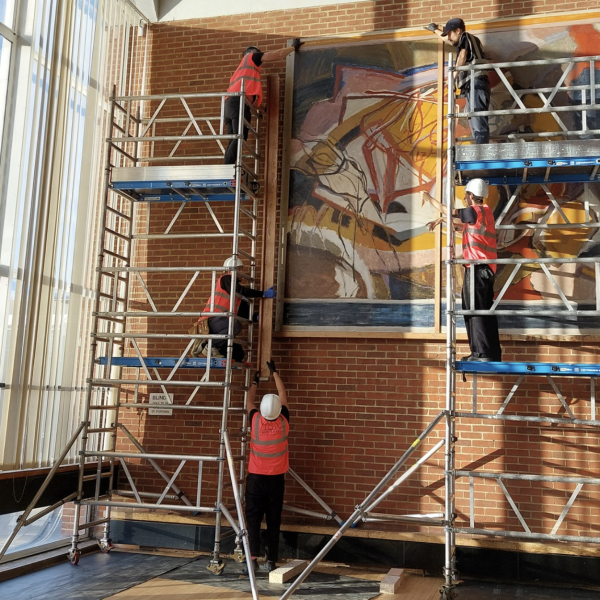In September, Reinforced Autoclaved Aerated Concrete (RAAC) was discovered in the ceiling of Mandela Hall in Falmer House. Days before the academic year was due to begin, the room was indefinitely closed. Along with the replacement work being carried out in Mandela Hall, five other buildings on campus were found to contain the pre-war concrete during an investigation in June 2022, including the stairwells of Bramber House. Construction is currently underway to replace the affected areas and protect students from the risk of unstable RAAC.
After the collapse of a RAAC beam in an English school last year, the Department of Education issued building surveys for institutions around the country to identify any areas where the dangerous material had been used in construction. The University of Sussex found RAAC in Bramber House, JMS, Chichester I, Chester II, and Arundel. All five buildings underwent immediate assessment works in 2022, but remained open with some restrictions after being deemed safe by the University of Sussex Health and Safety Team. Safety measures such as scaffolding and props are in place, and replacement works are planned.
Bramber House, containing Eat Central and the Co-op, is set to undertake the work first with the replacement of the panels above the five stairwells. While the use of the building is not impacted, students have been able to hear construction noise and feel the vibrations. Work on the first stairwell concluded on 9 October, however, the whole project will continue into the new year, since work was staggered to maintain access to the upstairs seminar rooms in the building.
The closure of Mandela Hall has led to difficulties for student societies that normally use the space for meetings. The co-captain of the Sussex Swallows cheer squad told The Badger: “[We were only] informed less than a week before our first trial being booked in that room. Now our team is unable to dance or stunt properly in the space given, as there’s a lack of spaces to go around the societies.” The Grade 1 listed building status of Falmer House is also slowing down the investigation and replacement process. The iconic original mural, Day’s Rest, Day’s Work, by Ivon Hitchens was moved to storage on 17 November ahead of investigation work.

The University has stated that “the health and safety of staff and students has been a priority throughout this process.” However, it also prioritised the combination of remediation work on RAAC panels with other developments to minimise costs and disruption. The replacement of RAAC only began in the last few months, more than a year since the initial discovery. Alongside these replacement works is the construction of West Slope.
RAAC is a lightweight construction material commonly used across the UK between the 1950s and the 1980s. It was widely used as a cheaper alternative to regular concrete, as it also had a faster production timeline and was easier to install. However, these perks came at the cost of longevity and it is generally less structurally sound. The post-war concrete has a lifespan of around 30 years, and it is “susceptible to structural failure when exposed to moisture” as stated by BBC News. The continued use of this concrete beyond its expiration date has led the Health and Safety Executive to declare that it may “collapse with little to no notice”. Nationwide, more than 200 schools are urgently attempting to resolve the issue to prevent further disruption to education.
According to a timeline of the deterioration of RAAC put together by The Guardian, as early as 2002 there were signs that this aerated concrete may no longer be wholly structurally sound. The now privatised Building Research Establishment which works closely with the government reported a growing number of cracks in pre-1980 buildings. However, it wasn’t until July 2018 that this issue manifested as a ceiling collapsed in a primary school. This prompted the Department of Education to advise schools to check the integrity of their buildings “as matter of urgency”. In February 2021, there was a formal warning that the life expectancy of RAAC had expired.
